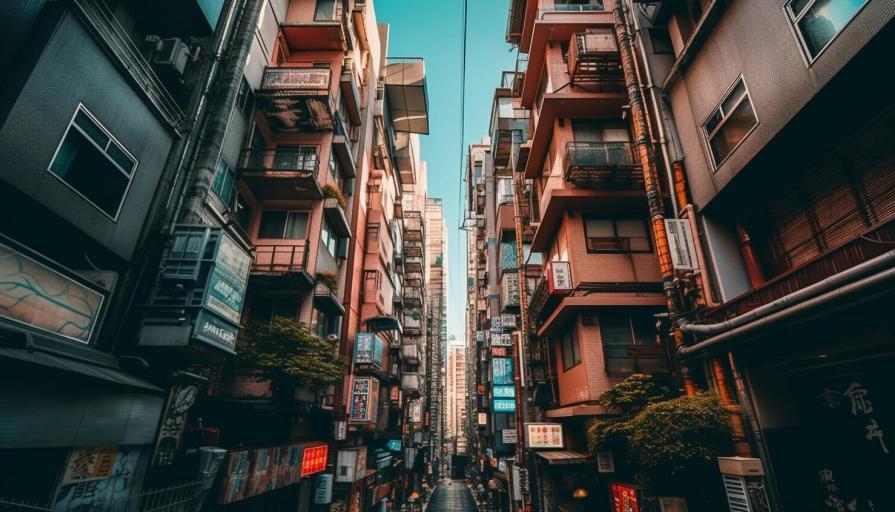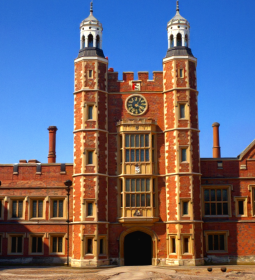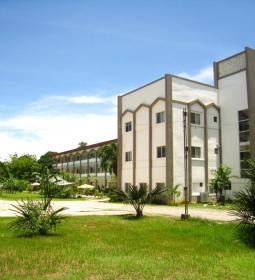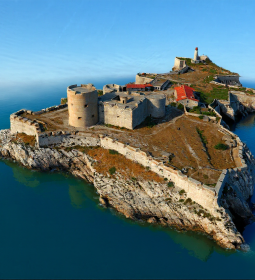The Japanese repeatedly left their native land, overcoming many obstacles. The most significant migration waves were recorded in three historical periods:
- the beginning of the XVII century, the time of the Tokugawa shogunate, when Christians, fearing persecution, left the country,
- the second wave came during the Meiji period, when, after centuries of isolation, Japan opened its borders, and many Japanese began to seek a better life overseas,
- the latter occurred after the end of World War II.
The Japanese found new homes in the United States, Canada, the Philippines, Brazil, Argentina and many other countries, everywhere forming their own neighborhoods. Now these areas are not only home to ethnic Japanese, but also receive tourists from all over the world.
Liberdad in São Paulo
Liberdad is home to Japan's largest community outside of their historic homeland, numbering more than 70,000 people. The first Japanese immigrants who arrived in the 1910s gave rise to settlement, but the bulk arrived after the end of World War II.

The Japanese, tired of living in their homeland after the defeat, decided to move to Brazil with their families to start a new life in the neighborhood with the telling name - "Liberdad", which means "Freedom" in Portuguese. This area is known for its unique architecture: by 2008, most of the buildings were restored before the visit of the Japanese emperor Naruhito.
Colonia of Urcuis in La Plata
The colony of Urcuisa is home to the largest number of Japanese in Argentina, home to more than 350 families. They came to La Plata in 1960 at the invitation of the National Agrarian Council of Argentina with the aim of stimulating the development of agriculture.
The Japanese, known for their economic skills, have significantly transformed the local landscape, introducing elements of their culture into it: they built greenhouses with exotic plants, farms, a Japanese-style park, opened a school, restaurants with national cuisine and a training center. In addition, they established a tradition to hold a Japanese song festival every August. All this has made the Urcuis Colonia a tourist magnet not only for La Plata, but for the whole of Argentina.
Paco Enclave in Manila
The Paco enclave in Manila in the Philippines represents the oldest Japanese area outside of Japan. Its history is unique: the first Japanese settlers fleeing religious persecution in their native country arrived in the Philippines at the end of the XVI century. By the beginning of the XVII century, they settled in their own area, which in the XIX-XX centuries became a shelter for new waves of Japanese migrants.

This area has withstood epidemics and wars and today is an integral part of the appearance of Manila. Its main attraction and symbol of the Japanese community of the Philippines is a memorial in honor of Takayama Yukon, the leader of the first settlers and a Catholic priest.
Japanese area in Düsseldorf
In Düsseldorf there is a Japanese area that is clearly different from the Japanese quarters in the United States, but has its own unique community. Since the early 1970s, this city has been home to many headquarters of Japanese companies: mainly on the streets of Düsseldorf you can meet employees of these companies and their families.
Although Japanese shops and restaurants were originally created to meet the needs of these people, they quickly gained popularity among locals, turning the area into one of the city's top attractions.
Japantown in San Francisco
The Japantown in San Francisco is recognized as the oldest in the States, which arose in the western part of the city after the earthquakes of 1906, when the Japanese began to massively populate this area. The neighborhood grew rapidly and prospered until the attack on Pearl Harbor occurred: after this tragedy, the quarter faced pogroms, and then mass internment of people of Japanese descent in special camps.

At the end of World War II, not all internees returned to San Francisco. However, over time, the grievances faded, and the quarter revived: Japanese restaurants and shops reopened, and street signs with hieroglyphs restored a vibrant atmosphere. In 1957, the quarter became "Little Osaka" in honor of San Francisco's first sister city.
Mini Tokyo in Los Angeles
"Little Tokyo" in Los Angeles went through the same twists and turns as the Japanese district in San Francisco. Its foundation dates back to the beginning of the last century, and then the area became abandoned due to the internment of the Japanese during World War II. However, surprisingly, after the end of the war, "Little Tokyo" was restored, in 1995 it even received the status of a national historical monument of the United States.
Within its borders are numerous outstanding objects: the National Museum of Japanese-Americans, the David Hwang Theater, a traditional Japanese observation tower, gardens and monuments. Particular attention is paid to restaurants offering Japanese cuisine, which have become the main attractions of the area.
It is believed that it was here, in "Little Tokyo", that Ichiro Mashita came up with the famous "California" roll.
Chiyuda's Japantown in Bangkok
Bangkok's Japantown, also known as Chiyuda, is one of the most active and lively in the city. It is located in the central part of the city, in the Sukhumvit district, and has an extensive network of shops, restaurants and business centers. Chiyuda's neighborhood attracts thousands of visitors daily with its traditional Japanese restaurants, boutiques, and specialty shops.

There are many cultural and festive events throughout the year, including the Thai-Japanese Spring Festival, where you can enjoy Japanese music, dance and food.
Nihonmachi's Japantown in Seoul
Despite the fact that South Korea and Japan have a complex historical relationship, there is an active Japanese community in Seoul known as Nihonmachi. This quarter is famous for its unique atmosphere and rich selection of Japanese cuisine: in its narrow streets you can find many Japanese restaurants, cafes and bakeries, as well as shops selling traditional Japanese goods.
It also attracts many anime and manga lovers thanks to its branded stores. Nihonmachi is a great place for those who want to experience Japanese culture in the heart of Seoul.













